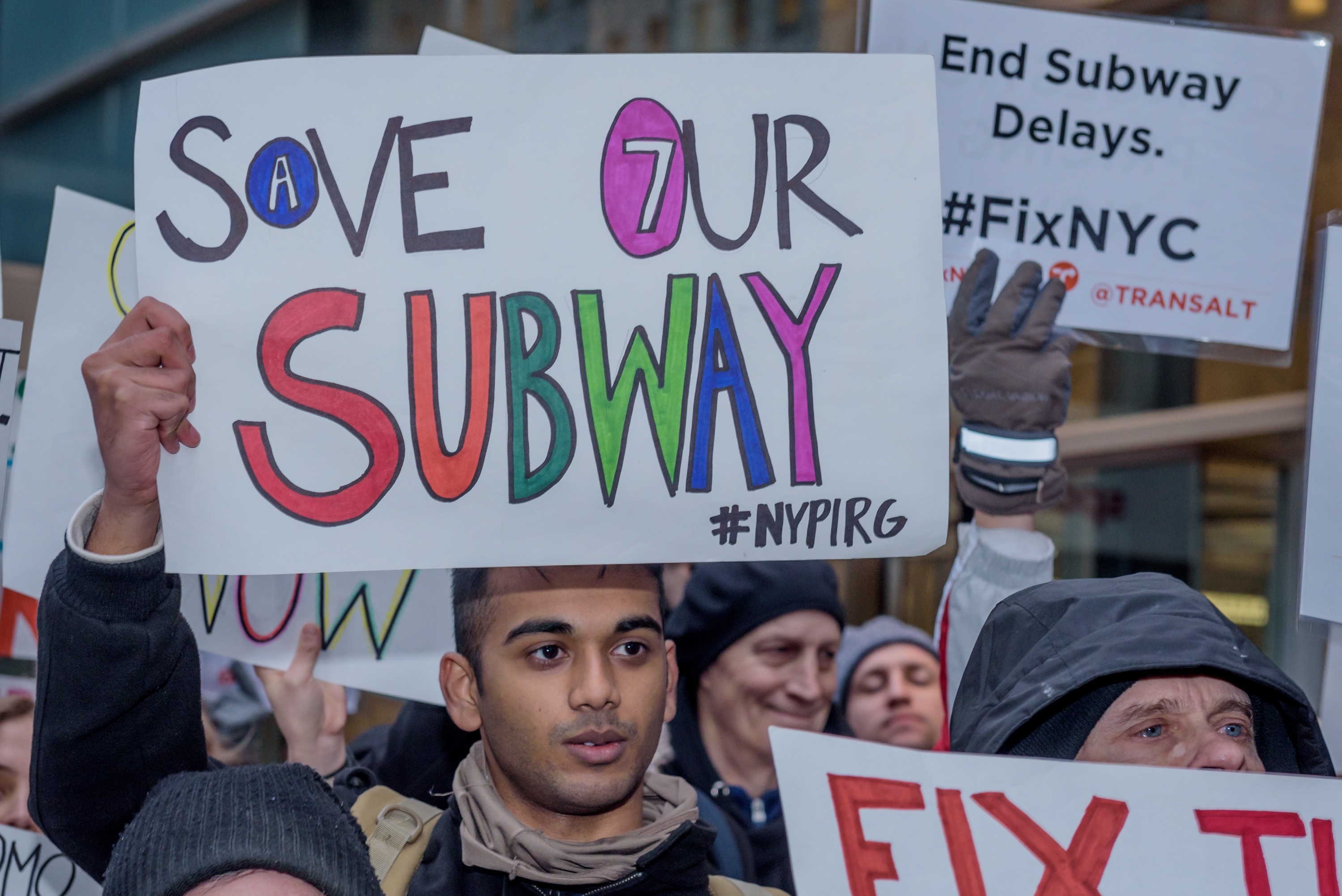
Photo by Erik McGregor
Today TransitCenter, along with partner organizations Riders Alliance, Tri-State Transportation Campaign, and Reinvent Albany, is launching Build Trust, a new campaign to spur greater efficiency, transparency, and accountability at the MTA. The campaign focuses on the 2020-2024 Capital Program as a key arena where Governor Cuomo and MTA CEO Pat Foye can put these values into practice and tangibly improve the rider experience.
The 2020-2024 MTA Capital Program is the agency’s forthcoming plan to maintain and upgrade assets like track, rolling stock, and stations. In addition to keeping existing infrastructure in a state of good repair, the capital program must include major investments in station accessibility, modern signaling, and new subway cars –– a key selling point for congestion pricing in the 2019 legislative session.
Troublingly, however, release of the capital program is behind schedule and the project list is currently being debated behind closed doors. The plan still has not been unveiled to the public or the MTA Board, even though the board is expected to vote on it two weeks from now.
Riders need the next capital program to deliver the essential improvements they deserve. Governor Cuomo should not repeat the mistakes of past capital programs, where too many resources went toward gold-plated expansion mega-projects, at the expense of the existing system that millions of people depend on. And the MTA must improve project management, reducing delays and bringing the agency’s high construction costs under control.
By prioritizing the right projects, setting high standards for project delivery, and committing to transparency measures that invite public accountability, Governor Cuomo, MTA leadership, and state lawmakers can fix and modernize the subway while building trust in the agency.
The Build Trust campaign recommends a four-point framework for the composition, delivery, and oversight of the MTA capital program.
Set the right priorities and tell transit riders how they will be achieved
The capital program must address core subway maintenance priorities and invest in upgrades that will yield better service for riders across the whole system. These improvements should include the addition of stair-free access at 50 subway stations as a down payment on the agency’s commitment to make the system fully accessible; installing communications-based train control signaling (CBTC) on five of the busiest subway lines to increase capacity and reliability; and at least 1,800 new subway cars to refresh the fleet.
The MTA should detail how it plans to deliver this ambitious undertaking by publicly releasing a 5-year implementation plan. Elements of such a plan would include clear project timelines and construction cost targets, with a schedule for regular public updates on implementation.
Get costs under control
The MTA must reduce its high construction costs. Critical upgrades like CBTC installation and station elevators routinely cost multiples more than comparable projects in large cities like London. If the MTA could deliver capital projects at costs in line with peer agencies, it could stretch funds further and get more done to improve the rider experience.
A good start would be to set benchmark unit cost targets for common types of capital upgrades, based on a review of capital costs of other large agencies with old rail networks. The act of declaring cost targets can align MTA project management around cost control as an overarching goal. Benchmarking costs based on peer agency averages will also help reveal how to bring MTA capital construction in line with industry best practices.
Be transparent and accountable to the public
The MTA should create a user-friendly online tracker for key projects in the capital program –– including station accessibility projects and signal upgrades.
The MTA’s subway performance dashboard is a good template for a simplified capital project tracker. It conveys essential information while remaining legible to non-experts. The website is uncluttered and presents key metrics that reflect the rider experience. Most importantly it provides accurate and up-to-date information.
Contrast that with the agency’s current website for reporting construction progress, which is illegible to the interested public. Project descriptions are outdated, and construction updates are written in jargon that is indecipherable to non-experts. The dashboard does not readily convey whether projects are on track to meet a target opening date. Overall, it is not a functional accountability mechanism that helps the public track adherence to project timelines and budgets.
Committing to clear and accurate reporting, whether or not it paints a flattering portrait, would reinforce construction management discipline at the MTA.
Make legislative oversight work for transit riders
Starting this fall, Senate Majority Leader Andrea Stewart-Cousins and Assembly Speaker Carl Heastie should allow for a meaningful oversight hearing on the MTA Capital Program to ensure the interests of transit riders are represented. After approval of the capital program, lawmakers should conduct a joint oversight hearing each session specifically on the agency’s progress toward its capital commitments.
Governor Cuomo, MTA Chairman Foye, Leader Stewart-Cousins, and Speaker Heastie can deliver a successful subway modernization by prioritizing the right projects and committing to construction efficiency, transparency, and accountability. This framework will not only pay dividends via the next capital program, but will set a template for smart, rider-focused transit investment New Yorkers can trust.